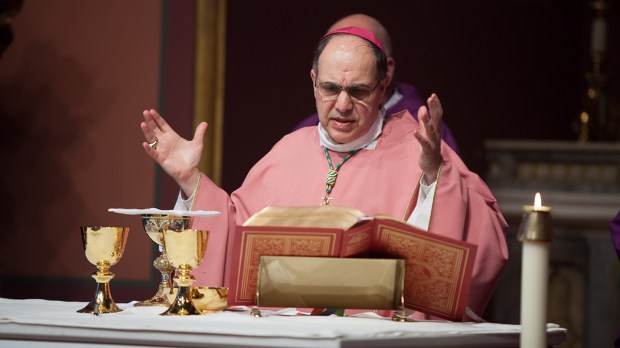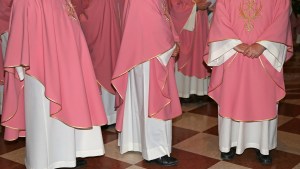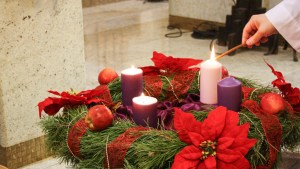Priests seem to always get a chuckle from their congregation on one Sunday in Advent and Lent. It is the Sunday where they wear what appear to be “pink” vestments.
The priest will jokingly say, “It’s rose, not pink!”
While everyone laughs, there is truth behind that statement. The Church does not list pink as a liturgical color. The reason behind it is a matter of the historical availability of dyes.
The color pink, a basic mixture of red and white, was not widely available until the 17th century, and its use wasn’t as popular until the rise of artificial dyes in the 19th and 20th centuries.
Vogue explains that “Pink is said to have been worn in ancient India and imperial China, as well as the upper echelons of 18th-century European society, where it was a symbol of social status, since the materials used to dye such lavish garments were imported from expensive expeditions to central Asia and South America.”
On the other hand, Catholics were well aware of other natural dyes available in Europe, such as madder, and the Church eventually prescribed the color rose, or rosacea in Latin.
Symbolism of rose
In a 1910 edition of The American Ecclesiastical Review the question of rose is brought-up, and the writer explains some of the symbolism behind the mixture of colors to create rose.
The expression in color of this sentiment of joyous hope during the penitential journey corresponds to a brightening or tempering of the somber purple so as to approach to the color of the rose (rosaceus qui est violaceo clarior et quodammodo tendit in rubrum). The precise shade is not necessarily of a single grade. Purple as a composite color is produced by the combination of red and blue. The deeper andstronger the blue is in the mixture the more somber and dark will be the purple, whereas the more the clear red predominates in the combination all the brighter and more festive will be the purple. It is the predominance of red therefore that lends its characteristic to the symbolism of the special color used on the two Sundays of Advent and Lent on which we chant “Gaudete” and “Laetare.”
However, the red used can’t dominate, otherwise it will remind us too much of martyrdom.
But the red though it predominates in the purple must not make it too closely resemble the red used on feasts of martyrs, for it does not indicate bloody martyrdom or sacrifice but joy. Hence the tint to be chosen is a light pale rosered, since white is the symbolic color of joy in the liturgy.
Finding the right shade of rose
The author continues with his explanation of the color rose, explaining why it is not pink, and where the proper dyes come from.
The term rosaceus stands therefore, not for a purple crimson or pink but rather for the brighter rose color approaching the tints of the rosa albina or flower known by horticulturists as La France with the suggestion of blue in its tone … When we say bright we do not of course mean the garish rose tint that is produced by the dilution of coal tar colors in commercial use. These are not found in nature. Vegetable dyes such as archil and madder subdued by an admixture of white would give a natural and becoming rosaceum.
Now you might understand why your priest might make a joke about “pink.” In truth, his vestment shouldn’t be pink, but rose, to symbolize the lightening of penance and the approaching joy of Christmas.



